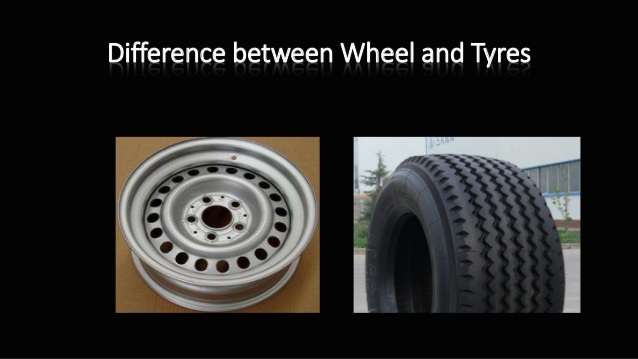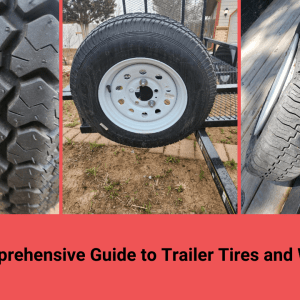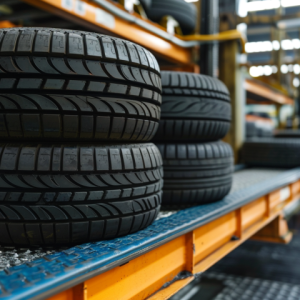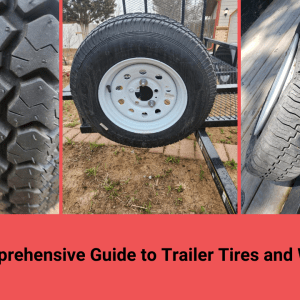Many people use the terms “wheels” and “tires” interchangeably, but they are actually distinct components of a vehicle. Understanding the difference is crucial for proper maintenance and safety. This article will clarify the difference. It will also cover related topics. Let’s dive in!
What is a Wheel?
The wheel is the metal structure that the tire is mounted on. It’s the part that connects to the axle and allows the vehicle to roll. Wheels are typically made of steel or aluminum alloy. They come in various sizes and designs. The design impacts the vehicle’s appearance.
Wheels are responsible for:
- Supporting the weight of the vehicle.
- Transferring power from the engine to the tires.
- Providing a mounting surface for the tires.
Wheel Materials
Steel wheels are generally more durable and affordable. Aluminum alloy wheels are lighter and offer better heat dissipation. This can improve braking performance. They also often look more stylish.
What is a Tire?
The tire is the rubber covering that fits around the wheel. It provides traction with the road surface. Tires are made of rubber, fabric, and steel belts. They are designed to provide grip, cushioning, and wear resistance. Proper tire inflation is essential for safety and fuel efficiency.
Tires are responsible for:
- Providing traction for acceleration, braking, and cornering.
- Absorbing shocks and vibrations from the road.
- Supporting the weight of the vehicle.
Are Wheels and Tires the Same Thing? ‒ The Answer
No, wheels and tires are not the same thing. The wheel is the metal part, and the tire is the rubber part that goes around the wheel. Think of it like this: the wheel is the foundation, and the tire is the shoe.
It’s a common misconception, but understanding the difference is important for vehicle maintenance and purchasing decisions. Knowing the correct terminology helps when communicating with mechanics or tire shops.
FAQ: Frequently Asked Questions
No, tires and wheels must be compatible in size. Using the wrong size tire on a wheel can be dangerous. It can lead to tire failure or handling problems. Consult a tire professional for guidance.
Tire replacement frequency depends on several factors, including driving habits, road conditions, and tire quality. Generally, tires should be replaced every 6-10 years, or when the tread depth reaches the minimum legal limit. Regular inspections are crucial.
Tire pressure is the amount of air inside your tires, measured in PSI (pounds per square inch). Maintaining the correct tire pressure is crucial for optimal performance, fuel efficiency, and safety. Check your vehicle’s owner’s manual or the sticker on the driver’s side doorjamb for the recommended tire pressure.
Choosing the Right Wheels and Tires
Selecting the correct wheels and tires for your vehicle is a critical decision that impacts performance, safety, and aesthetics. Consider your driving needs and budget when making your choice. Don’t hesitate to seek professional advice.
Factors to Consider When Choosing Wheels:
- Size: Ensure the wheel size is compatible with your vehicle’s specifications. Incorrect sizing can lead to rubbing, handling issues, and even damage to your vehicle.
- Material: Choose between steel and alloy wheels based on your priorities. Steel offers durability and affordability, while alloy provides weight savings and improved aesthetics.
- Offset: The wheel offset affects how the wheel sits within the wheel well. Incorrect offset can cause rubbing or affect handling.
- Bolt Pattern: The bolt pattern must match your vehicle’s hub for proper and safe installation.
Factors to Consider When Choosing Tires:
- Size: Match the tire size to your vehicle’s specifications and the wheel size.
- Type: Choose the appropriate tire type for your driving conditions. Options include all-season, summer, winter, and performance tires.
- Tread Pattern: The tread pattern affects traction, noise, and wear. Consider your driving environment when selecting a tread pattern.
- Load Rating: Ensure the tire’s load rating is sufficient for your vehicle’s weight.
- Speed Rating: The speed rating indicates the maximum speed the tire can safely handle. Choose a tire with a speed rating appropriate for your driving habits.
Maintaining Your Wheels and Tires
Proper maintenance is essential for extending the life of your wheels and tires and ensuring safe driving. Regular inspections and maintenance practices can prevent costly repairs and accidents.
Wheel Maintenance Tips:
- Regular Cleaning: Clean your wheels regularly to remove dirt, brake dust, and road grime. Use a mild soap and water solution and a soft brush.
- Inspect for Damage: Check your wheels for dents, cracks, or bends. Damaged wheels can compromise safety and should be repaired or replaced.
- Torque Lug Nuts Properly: Ensure lug nuts are tightened to the correct torque specifications. Over-tightening can damage the wheel studs, while under-tightening can lead to wheel detachment.
Tire Maintenance Tips:
- Check Tire Pressure Regularly: Check your tire pressure at least once a month and before long trips. Use a reliable tire pressure gauge.
- Rotate Tires Regularly: Rotate your tires every 5,000-7,000 miles to ensure even wear.
- Inspect Tire Tread: Check your tire tread depth regularly. Replace tires when the tread depth reaches the minimum legal limit (typically 2/32 of an inch).
- Check for Uneven Wear: Uneven tire wear can indicate alignment issues or other mechanical problems. Have your vehicle inspected by a professional if you notice uneven wear.
- Balance Tires: Balanced tires provide a smoother ride and prevent uneven wear. Have your tires balanced when you rotate them or if you notice vibrations.
When to Seek Professional Help
While some wheel and tire maintenance tasks can be performed at home, certain situations require professional assistance. Don’t hesitate to seek expert help when needed.
Situations Requiring Professional Help:
- Tire Repair: If your tire has a puncture or other damage, have it inspected and repaired by a qualified tire technician. Not all tire damage is repairable.
- Wheel Repair: If your wheel is bent, cracked, or otherwise damaged, have it repaired or replaced by a professional.
- Alignment Issues: If your vehicle pulls to one side or you notice uneven tire wear, have your alignment checked and adjusted by a qualified mechanic.
- Tire Installation: Installing tires requires specialized equipment and expertise. Have your tires installed by a professional to ensure proper mounting and balancing.
- Wheel Balancing: Balancing tires requires specialized equipment. Have your tires balanced by a professional to ensure a smooth ride and prevent uneven wear.
Remember, your wheels and tires are critical components of your vehicle’s safety system. Prioritize their maintenance and seek professional help when needed to ensure a safe and enjoyable driving experience.





